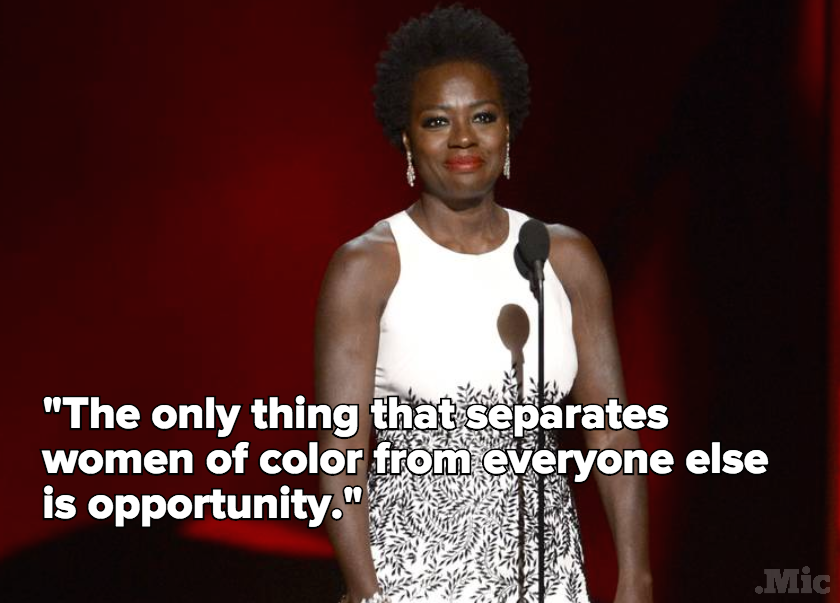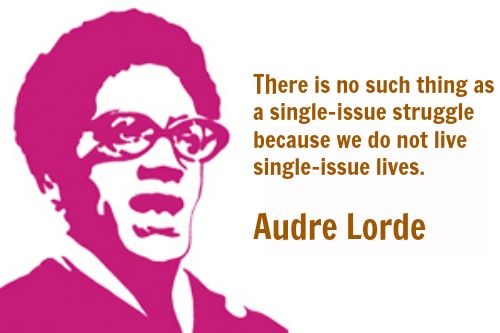This past June’s 2016 GEA conference was the very first GEA conference to put ‘Intersectionality’ in the title! It was entitled ‘Gender Equality Matters: Education, Intersectionality and Nationalism’ at Linköping University, Sweden, 15-17 June 2016. Below GEA Executive member Victoria Showunmi reflects on ‘getting real’ about what this intersectionality means for her as a woman of colour occupying an executive position within GEA, and leading the conference event. As someone who has worked closely with Victoria for 7 years, I applaud her brave work in expressing the pain and anxiety of facing everyday racism and sexism in Higher Education. Often viewed as a bastion of privilege, these elite institutions carry so much ‘white old man’ baggage that sometimes we lose sight of the work we need to do as diversely located ‘women’ to address and work through the pain of racism to get to ‘higher ground’ in our thinking and practice. We are looking forward to comments and engagement from other women of colour scholars, particularly students and early career researchers whom we hope will find a space of encouragement, dialogue and support in Gender and Education Association, please consider joining now!
Professor Jessica Ringrose, GEA co-Chair
‘The only thing that separates women of colour from anyone else is opportunity’: Viola Davis (Sept 2015)
I was asked to stand in as the Chair for GEA’s 2016 conference which took place at Linkoping University on 15 – 17th June 2016. With both GEA Co-Chairs unable to attend the event, and the Membership Officer unable to fly in due to SAS strike, I was the only member of the GEA executive in attendance! I had been given less than 24 hours notice. It was one of those bizarre moments which needed to be turned into an opportunity for GEA. Although my role was a small one within the scheme of the whole conference, I embraced the challenge. It was significant that I, as woman of colour, was representing GEA internationally for the first time in GEA’s history. GEA has another woman of colour on the Executive (Vanita Sundarum) besides me, but this was the first time a woman of colour was acting as the ‘face of GEA’. As an organisation, GEA has, over the years, struggled with getting sufficient numbers of people (in particular women) of colour involved in the organisation, not surprising given the well documented institutionalised racism in Higher Education. There has always been a handful of women of colour internationally in GEA but not enough to make a real or longstanding difference in developing a powerful collective voice.
Why is this?
England is currently in a crisis – there are 18 number of women of colour who hold the post of Professor. This shocking figure is not surprising due to institutionalised racism, but also greatly complicated by the difficulties in addressing racism between women. The long history of voices of women of colour being silenced by white feminisms is well documented (Carby 1996 Mohanty 1998). Fourth wave feminism makes the bold claim that it is tackling all ‘isms’ and is fully intersectional (Munroe, 2013). But accepting the way in which poverty, discrimination, microaggression (“daily verbal, behavioral, or environmental indignities, whether intentional or unintentional, that communicate hostile, derogatory, or negative racial slights and insults toward people of color.” Derald Sue 2013) are integral to the lived experiences that dominate women of colour’s agenda could be something considered to be too complex and somewhat negative to be included in the university context where neo-liberal competition reigns supreme. So is simply including the notion of ‘intersectionality’ in the title, as has become common in many contexts sufficient?
When women of colour try and explain to white women about their experiences of being a women of colour they are subjected to comments such as ‘how could you possibly face racism in your line of work?’ Whilst at the same time they have to listen to the same white women recounting their experience about sexism faced by male domination. Women of colour do their best to engage white women in their discussion but can sadly fail to gain much response amongst colleagues. The refusal to acknowledge women of colours experiences as integral to feminist activism and scholarly meaning is disheartening.
Feminism without intersectionality is simply self-serving for whiteness and class privilege. But what does genuine intersectionality look like? How do we incorporate this into our everyday lives in HE? Women who fret about climbing the corporate ladder and shattering the class ceiling yet are indifferent to the violence, poverty and discrimination that women of colour face on a daily basis are looking out for themselves – or at the most protecting people just like themselves.
The dehumanisation of black women in the public media, for instance sheds light on everyday taken for granted racisms, Black women students researchers and lecturers, can also face where it is not only their intelligence called into question but their bodies. If we for example look the regular reporting of Serena Williams playing in White Wimbledon or even Michelle Obama. Both are subjected to direct and indirect racism for being women who are seen as too masculine in their physical appearance to be attractive women. This of course is formed on the notion of whiteness and what is presented in being attractive. And of course we can’t leave out the discussion on shadeism which adds to the subjectiveness to what is appealing to the world of attractiveness. Shadeism and class is something that I too have had to grapple with both directly and indirectly as a woman of colour. It’s harder being a women of colour living and working in London than it was growing up and working in other parts of the United Kingdom. It raises questions such as why and how could this be? I am not at liberty to address these questions it is something that I do want to come back to in a future paper.
At the personal level, acting as GEA Chair was, I knew, one of those peculiar times which would benefit both GEA and me. How was I going to act? Knowing myself, I always like to give any kind of opportunity away to somebody else thinking that others are more deserving. If I was not careful it could again be one of those moments where I let the opportunity slip by. Acting ‘dumb’ is something that women have been known to do when on their first dates. Some women of colour apply the concept of dumbing down of who they are as a way to be accepted into the world of whiteness. Cast your minds back to hashtag campaign on the solidarity is for white women which were originally launched as a platform to discuss ways to talk about feminism.
On the one hand, I felt assured by the fact that at the same time as I had been asked to be Chair, GEA had resources in place with the fabulous group of students who support the organisation, such as Hanna Retallack, a PhD student, who was there to assist with the AGM and take minutes. That was reassuring. On the other hand, whilst I was excited about taking on the role I was having a bout of nervous anxiety. Why was I having these feelings when this was a chance to create a visual message for GEA: women of colour are needed and required in GEA. My anxieties stirred such emotions that I nearly pulled out of the conference and stepped down from the executive thinking “Oh dear, as a women of colour should it be me?” Perhaps I should pass it onto somebody else? Was I the going to be perceived as the authentic voice of colour? Of course, I knew that some of these anxieties were entangled with being raised as the only person of colour in my family and in the surrounding villages and towns in South West of England. Being the only person of colour is a recurring theme which has its moments which is something I have grappled with throughout my life. It means that you are the only one left fighting the good fight. I have always had to stand alone in the face of casual racism from people I speak with every day, and stand my ground. There are of course people who are tuned to the same frequency and highly-sensitive, hyper-awareness that forces them to check their privilege before they speak. Being the only person of colour in the higher education workplace is a feeling that’s hard to describe — a tightening of the stomach and a fluttering of the heart when something interesting that discusses race comes up, or the veiled bemusement cum irritation that presents itself when asked to explain something that could be solved by an easy internet search and an extra five minutes.
Before the meeting, I had a sudden surge of isolation. It felt like the whiteness was so overpoweringand stifling. “White privilege is the unquestioned and unearned set of advantages, entitlements benefits and choices bestowed on people solely because they are white. Generally white people who experience such privilege do so without being conscious of it” (Mcintosh,1989).Here I was as a Black women academic in relatively white space navigating my way around as a leader. Discussions on third or fourth wave of feminism that we have now moved into post-racial and we are done with race couldn’t prove more innnacurate!Whilst the conference provided a good selection of papers exploring the notions of intersectionality and how race plays an integral part ingaining a closer and better understanding of the relationship between gender, race, sexuality and class, the lived experience and posiitonality of the researchers as Patricia Hill Collins is keen to remind us is so critical, there were very few visible ‘minority’ people in this conference, and those experiences are felt keenly.
During the conference, I started to feel more at ease in the role. Pre-conference nerves disappeared and I started to enjoy the role. Conference delegates were approaching me as the face of GEA, this was good as I was able to answer questions and point them in the direction of past executive members who were also really happy to support me. It was an excellent conference and I appreciated the opportunity to step-up and let the light shine on me in the moment of GEA Chair.
Reflecting on the experience of acting as Chair and representative of GEA at the conference for me raises a range of different issues which need to be explored and addressed both by the GEA Executive and the organisation more broadly. Having an honest and open conversation will enable us to identity and then develop strategies to deal with the potential barriers which may be used as a defence barrier in not wanting change. It was so important to be accepted as woman and a woman of colour and just as important to know that we at GEA want to support younger generations of scholars in critical race and intersectional feminism in education to fill the very real gaps in representation, experience and teaching and learning.
Since being asked to write this blog I have agreed to take on the role as Equality and Diversity Lead for GEA. The purpose of the role will be to guide and support GEA as an association to keep on track with issues regarding all aspects of equality and learn how to best support the educational sector in finding equality for all.
Thanks Dr Carol Taylor for encouraging me to put pen to paper and write a blog.
Dr Victoria Showunmi







